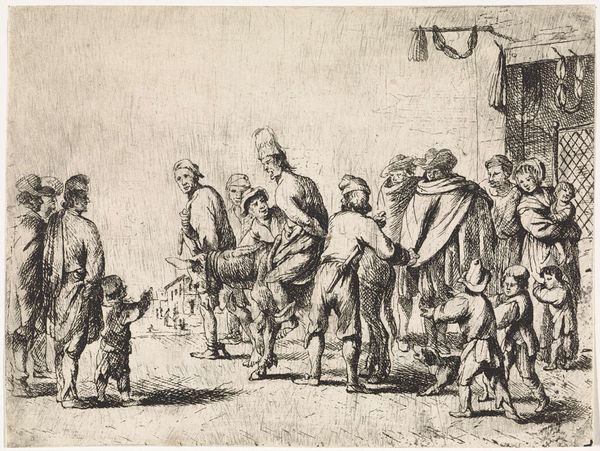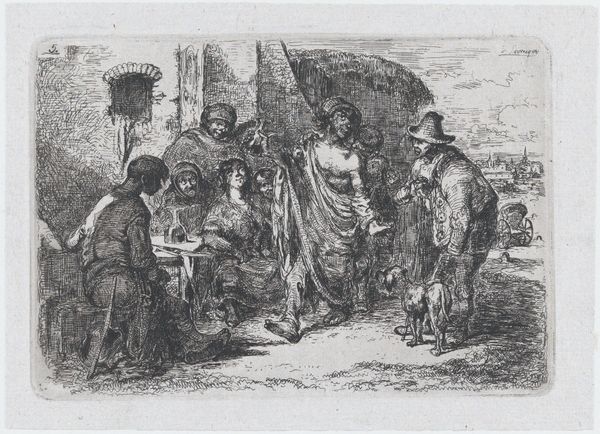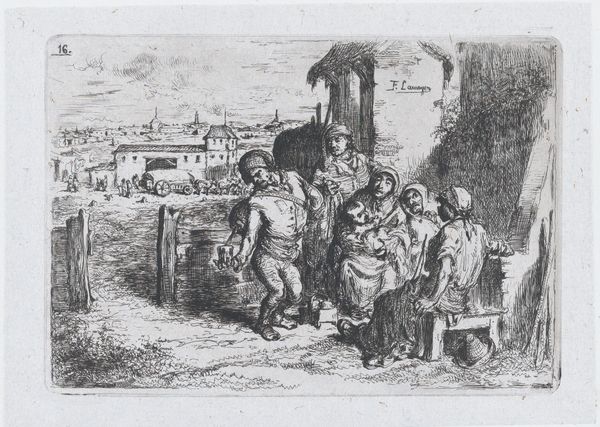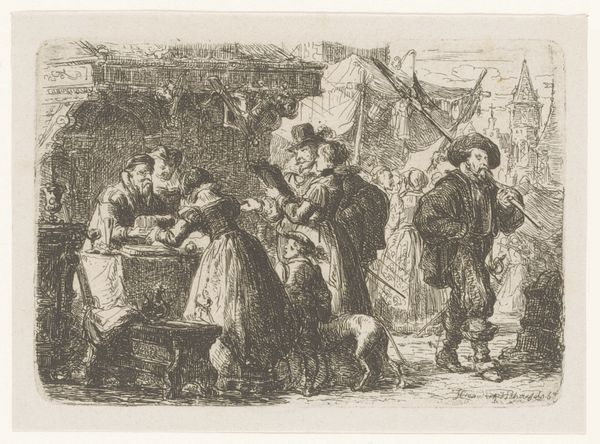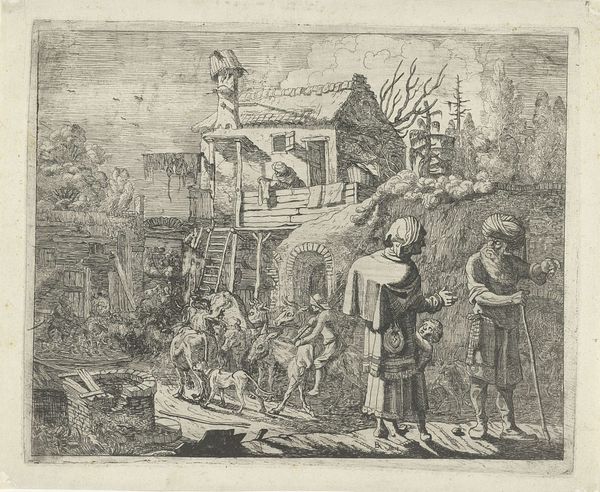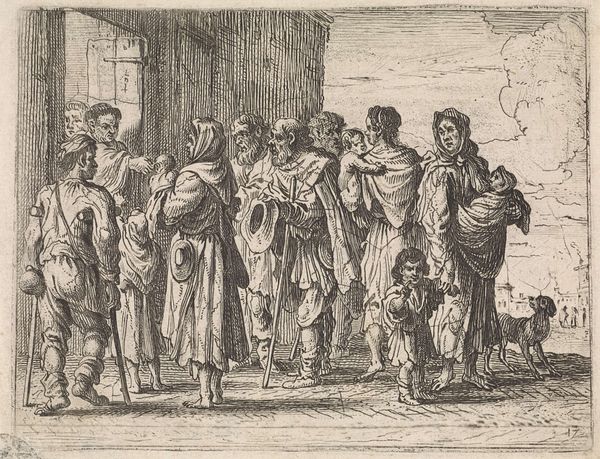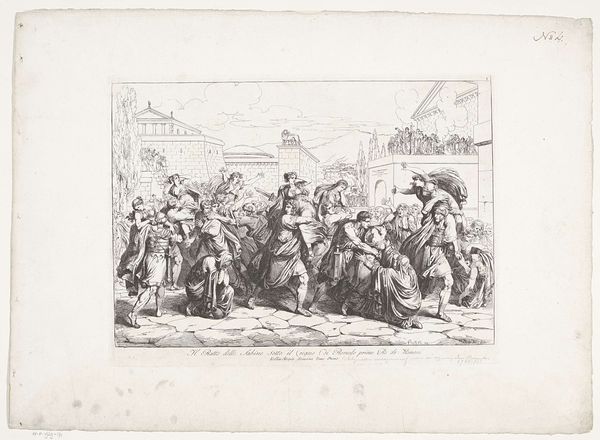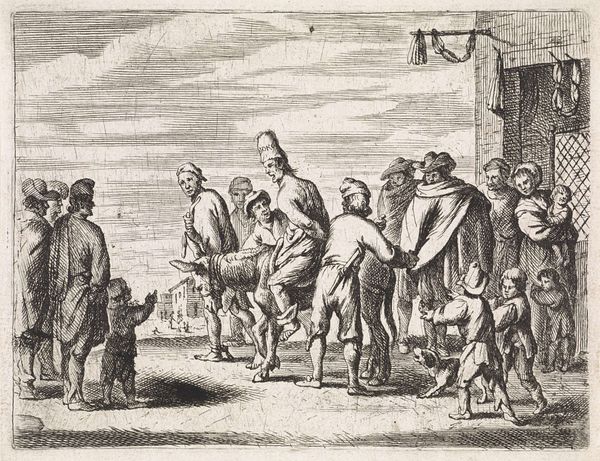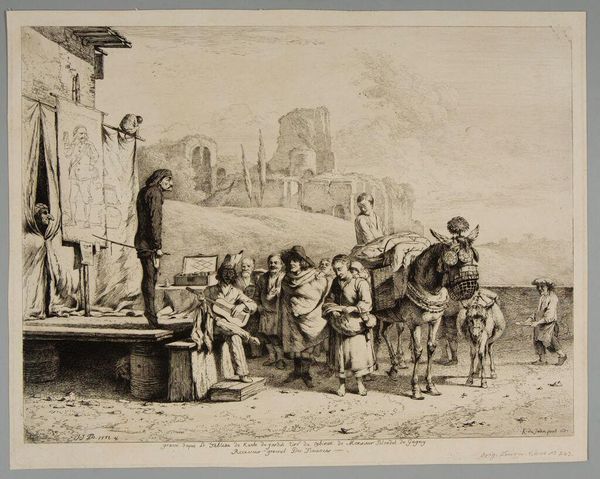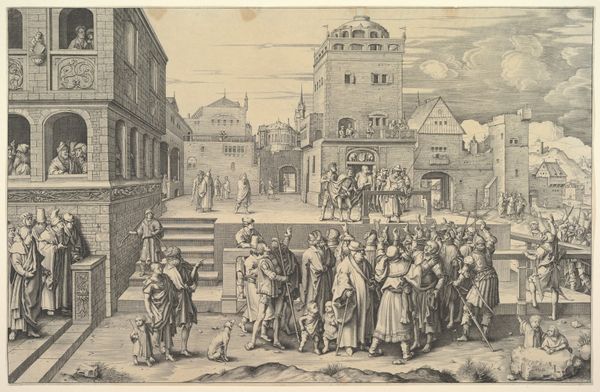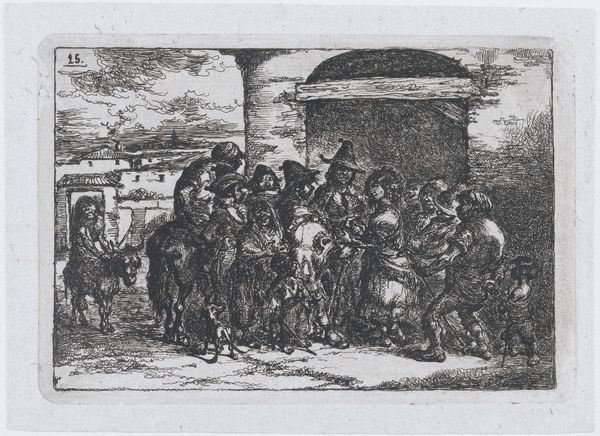
print, engraving
#
quirky sketch
#
baroque
#
mechanical pen drawing
# print
#
pen sketch
#
pencil sketch
#
sketch book
#
personal sketchbook
#
sketchwork
#
pen-ink sketch
#
pen work
#
sketchbook drawing
#
cityscape
#
genre-painting
#
history-painting
#
engraving
Dimensions: height 157 mm, width 224 mm
Copyright: Rijks Museum: Open Domain
Cornelis de Wael made this etching in Rome, sometime in the 17th century. The image is brought into being by a focused application of pressure, dragging a fine tool across a copper plate. Consider the way in which the etched line defines the scene before us. The composition is broken up into different planes: the rough, dense crowd in the foreground, the distant buildings, and the sky, all rendered through labor intensive hatching. As you look closer, you begin to see an entire social world evoked, through these marks: merchants, children, soldiers, and beggars. The very making of the print underscores this point. Like other forms of reproductive imagery, it puts art in the service of broader communication. Prints such as these made art accessible, but also were of their time and a reflection of the cultural moment. This etching by de Wael prompts us to consider the social context of image-making, and to understand the critical role of these mediums, not just as records, but as active participants in cultural and social life.
Comments
No comments
Be the first to comment and join the conversation on the ultimate creative platform.
